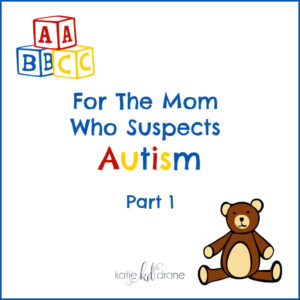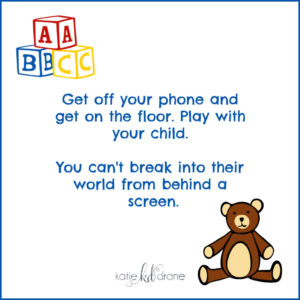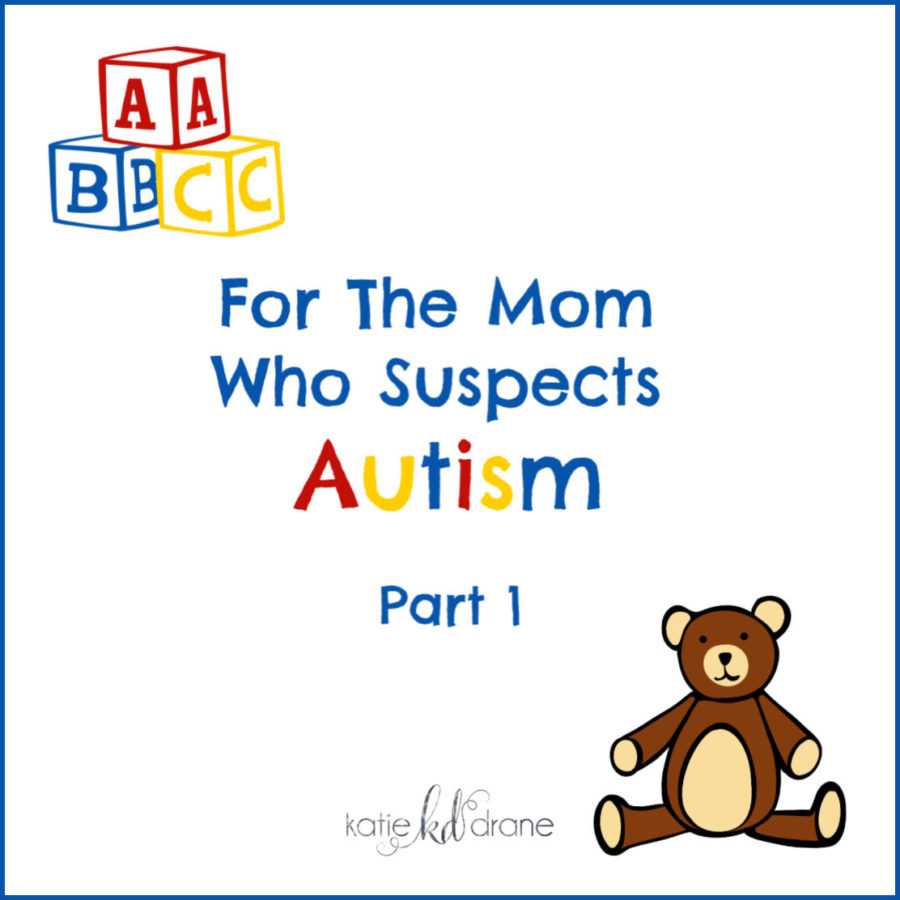
Ryan and I have two sons, Jack, 4, and Luke, 2, who have been medically diagnosed with autism spectrum disorder. There is a lot of information to share that I have divided into 4 posts. Part 1 focuses on Jack, when we were brand new to the process and had no idea what we were doing. Also, if you are a parent of a child with autism, please share your wisdom and encouraging words in the comments.
Three years ago, I was 7 months pregnant with Luke. I remember that time in my pregnancy vividly because it was also when I first began to suspect that Jack, who was almost 2 at the time, may need to be evaluated for autism.
A few months prior, Ryan and I had noticed behavior that seemed a little odd and different from what we saw with the girls at that age. For example:
Saying only 1 or 2 words consistently.
Screaming (this high-pitched blood curdling scream) when he needed something, instead of talking.
Not answering to his name.
Not following my gaze when I looked at something.
Not pointing to objects.
Being very sensitive to food textures.
Not crawling until he was 12 months old.
Not walking until he was 21 months old.
He would have huge meltdowns, not just toddler tantrums, that seemed excessive for what was going on at the time. He would try to hit himself and others, bite others, or bang his head on the floor. He especially hated being in small rooms, like at the doctor’s office and would melt down or hide under the exam table.

Jack didn’t do the whole normal development followed by a regression around 18 months like many kids with autism do (including Luke). He was always a little behind the curve on reaching developmental milestones.
But if I had to pick the one thing that concerned me the most, it was the lack of language. When we were around other children his age and observed what they were saying, we knew at the very least, he needed help with speech. He may even have trouble hearing. (Turns out, his hearing was perfect.)
There’s a saying that ‘when you’ve met one child with autism, you’ve met one child with autism.” This is 100% true, even within our own family. So if your child is exhibiting behaviors that are different than what I described for Jack, but you still have concerns, I recommend completing the MCHAT-R questionnaire (link below).
Where it was confusing for us was that Jack typically enjoyed being around people. He smiled, he liked being held, he played with his sisters. Everything I read about autism was that these kids did not like social interaction. They were loners and off in their own world. They flapped their arms and rocked back and forth. I even had my mom look up the signs of autism and she said “Kate, I just don’t know. I see some of his behavior in here, but he’s too social.”

So maybe I was just overthinking it. Maybe he was fine. I got online and looked up the signs of autism, read through the list, and because he wasn’t showing every single sign, I dismissed it. “I guess he’s just a late bloomer,” I would tell myself. Or “he’s a boy and they talk later than girls.”
But my gut knew better. And my guess is, your gut knows better too. Something is off, even if it doesn’t look like much. So I reached out to my friend Jessica who not only has a background in early childhood education, but special education as well, for help. Talk about a Godsend. We met in our local MOPS group the year before and she walked me through the steps I needed to take and even gave me some advice on what to do in the meantime (the time between the evaluation and when early intervention services began). Her advice was so helpful and relieved so much worry and anxiety that I want to help you walk through the very first steps too.
First thing’s first. Take a deep breath.
No matter what you find out, your child is the same child you knew and loved 5 minutes before you got any new information. Remember, there is no harm in having your child evaluated and an evaluation doesn’t change your child. Let’s get started.
- Take the questionnaire called the MCHAT-R (Modified Checklist for Autism in Toddlers, Revised) available HERE. It’s a 2-minute questionnaire that will let you know if your child is at risk.
- Knowing where to go, who to talk to and what to do next is overwhelming. Go HERE for a step by step list of what to do next. Autism Speaks has some awesome resources and information. It’s a great place to start.
The time between taking the MCHAT-R and Jack beginning early intervention services (in Kentucky, it is First Steps) was approximately 2 months. That two months can feel like an eternity. But there are things you can do in the meantime to help your child. These tips are great FOR ALL CHILDREN, not just children that may be on the autism spectrum.

DO make a timeline of when you first began noticing certain behaviors and a list of what those behaviors are.
You are going to need this list every time you talk to a new provider. It’s also good for you to be able to get all of these concerns out of your head and on to paper.
DO make an effort to engage your child in play and communication everyday, on the floor, even if just for a few minutes each day.
This kind of play, on their level, plays a major role in development and not just for children with autism. (More about the importance of play in Part 2.) The goal is to get into your child’s world. That’s not possible if you and your child always have a screen in front of your face. These changes don’t happen overnight and we all have to maintain our sanity, so no need to go from plugged in to Amish. But adding a little floor time with your child each day can make a big difference.

DO NOT tell everyone you know about your suspicion.
It was natural for me to want to seek support and encouragement from the people who love me–my friends and family. But as I found out, not everyone, even some of the people closest to me, have the capacity to handle this information. And it’s not because they’re bad people! It’s simply too difficult for some people to handle. No one wants to watch someone they love and their child struggle.
And many people still believe the old myths that an autism diagnosis means life as you know it, is over. It’s not! Life is not over, it’s just different and it will require making adjustments. For now, in the earliest stages of the process, it is important to be protective of yourself and your immediate family.
Someone else’s doubt, denial, criticism, skepticism and negativity only takes away from what you are trying to accomplish–to do what’s best for your child.
Choose your tribe wisely as you go through this process, but definitely start reaching out for support. You will need it.
DO allow yourself to feel everything.
Fear, sadness, anger, guilt, grief, hope, optimism. It will change from day to day, sometimes moment to moment, and that is totally normal. Autism can be very confusing and difficult to fully understand, not to mention something that no parent wants to face. But you’re already doing something great–you’re investigating. Early intervention is the best gift you could ever give your child and here you are, already looking for answers. It does get easier. For now, feel all the feels and be sure to make your physical and mental well-being a priority.

I’ll stop there for now. If you’re like me, your head is probably overloaded with all of this information and believe me, there’s lots more I will be sharing with you, including an explanation of some of the most common terms and therapies, sensory products and toys that are great for kids on the spectrum, and websites with additional resources.
I’ll also be sharing some really good things, like the amazing progress Jack has made over the past 3 years and the progress that Luke is making thanks to early intervention.
Hang in there momma. Love and hugs. You got this.


I’m so glad you shared this, Brandi! I was hoping you would. Ronan is the perfect example of how different autism can look for each child. I think it’s awesome that you took it as “challenge accepted” and worked so hard with him. Awesome!
Ronan progressed normally until around 2. The only thing he did differently was he didn’t talk a lot, either. But my older two talked later than most and they have had no issues with Speech at all, so I didn’t think anything of it. Then we noticed Ronan toilet trained later and it was HARD. Then his tantrums weren’t typical, they were meltdowns. His energy levels were super high, he was spinning. He didn’t have great sleep patterns. But he looked us in the eye quite a bit, he was social in his own way, he was affectionate and wanted it in return, he became quite verbal, even if still a bit delayed. He was not the society stereotype, as you mentioned. Even the pediatrician thought severe ADHD. We were evaluated by Weiskopff (I implore anyone who reads this to try another alternative. They are too textbook, insensitive, and act as if they work an assembly line. They do not welcome feedback concerning their methods of communicating with your child. It also took them 8 months to get him in and that made him age 5 at his diagnosis. ) We were taken aback, but once they explained the spectrum, a light came on and we understood and accepted their diagnosis right away. We rolled up our sleeves and got to work! He is now a well adjusted, happy 13 year old. He has made amazing progress and he makes us proud every day!